
How to Clean the Air in Your Home
Whenever there’s an infection going around, the first thing you always hear on the news—or see plastered on public restroom walls—is a reminder to wash your hands.
It’s true, handwashing is the easiest way to reduce disease transmission. But what about the air you breathe indoors? According to the Environmental Protection Agency, indoor air can have 2-5 times more pollutants than outdoor air, and most are invisible.
How can you clean the air in your home if you can’t even see it?

Indoor Air Pollutants
Improving indoor air quality begins with learning about the pollutants floating around your living space. Common air pollutants can include everything from regular pollen to insect droppings depending on your location and lifestyle.
Indoor air pollutants can be classified into three main types: physical, chemical, and biological.
Physical Air Pollutants include dust, secondhand smoke, asbestos, and other non-living indoor particulate matter. For example, if you’re remodeling or live near a construction site, you may have increased levels of physical pollutants. If you smoke or live with someone who does, that can cause a significant buildup of pollutants throughout your home.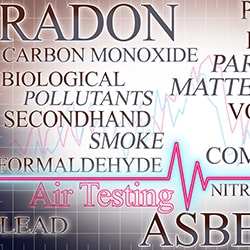 Chemical Pollutants largely consist of volatile organic compounds (VOCs) that come from paints, sprays, pesticides, and other chemical-based household items. Other common examples include radon and formaldehyde.
Chemical Pollutants largely consist of volatile organic compounds (VOCs) that come from paints, sprays, pesticides, and other chemical-based household items. Other common examples include radon and formaldehyde.
Biological Pollutants include any living organism or its byproducts. Living organisms primarily include viruses, bacteria, and mold spores. Matter from living organisms includes pet dander, pollen, insect parts or feces, and even the protein from mouse urine.
Ironically, modern homes are often designed in a way that helps contaminants stay indoors. Tighter building envelopes and energy-efficient practices are keeping stale air in and fresh air out. No surprise that there is a strong correlation between modern building practices and higher rates of infection.
Furthermore, HVAC systems can act like a freeway, transporting germs and pollutants from one vent to another. Fortunately, your HVAC system can also be your best defense against poor indoor air quality, as you’ll see below.
How to Clean the Air in Your House
The three best ways to clean the air in your house are ventilation, purification, and humidity control. When combined, these methods can help you breathe easier with peace-of-mind.
Ventilation
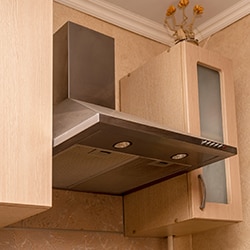 Ventilation involves the physical replacement of air inside a space. According to the CDC, ventilation is a primary infectious disease control strategy. Any pollutants will be ventilated out along with the stagnant air. Here are some common ventilation solutions.
Ventilation involves the physical replacement of air inside a space. According to the CDC, ventilation is a primary infectious disease control strategy. Any pollutants will be ventilated out along with the stagnant air. Here are some common ventilation solutions.
Exhaust Fans
Exhaust fans use a motor to draw in dirty air and send it outside through ductwork. For example, most homes have bathroom exhaust fans that remove odor and humidity. When you accidentally burn something while cooking, kitchen exhaust fans, also known as range hoods, remove the smoke so that your fire alarm doesn’t get triggered.
Air Exchangers
While exhaust fans remove stale air, they do not bring in fresh air. Air exchangers add this extra step and maintain proper pressure and freshness throughout the home.
Heat recovery ventilators (HRVs) and energy recovery ventilators (ERVs) are special kinds of air exchangers that not only exchange the air but also maintain temperature. For example, during winter you wouldn’t want to bring in frigid outdoor air. HRVs and ERVs extract the heat from the outgoing stale indoor air to heat up the incoming fresh outdoor air.
Attic Fans
Attic fans are used in conjunction with open windows to draw fresh outdoor air into your home. Installed in your attic, the fan works just like an exhaust fan, except you keep your windows open. In addition to ventilating your house, attic fans help with cooling during the summer so you can run the A/C less.
Air Purification
Learning how to purify air means you’ll know how to remove or destroy airborne pollutants. Unlike ventilation, air purification leaves the air in place, instead targeting the contaminants themselves.
Air Cleaners
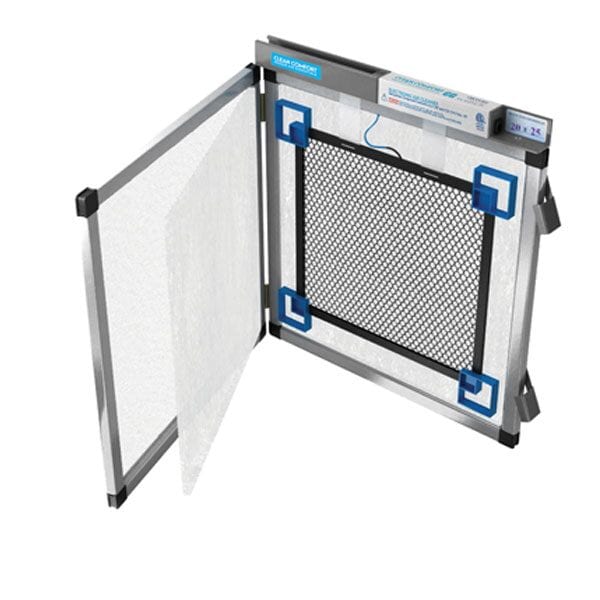 Typically installed on the return side of your HVAC system, air cleaners are the most common type of air purification. They include media and electronic air cleaners. Both kinds have proven effective at significantly reducing indoor air contaminants, according to ASHRAE.
Typically installed on the return side of your HVAC system, air cleaners are the most common type of air purification. They include media and electronic air cleaners. Both kinds have proven effective at significantly reducing indoor air contaminants, according to ASHRAE.
Media air cleaners are part of the furnace filter family and use a thick mesh to capture indoor air pollutants before they enter the blower in your HVAC system. Their effectiveness is determined by their MERV rating, and the filters must be replaced regularly. Electronic air cleaners purify the air by using electricity to attract and capture pollutants onto a washable filter.
HEPA Air Purifiers
HEPA purifiers are the most effective air purification systems, able to capture everything down to even some bacteria and viruses with a special filter. Many also include an activated carbon filter that can remove odors and gases.
Ultraviolet Air Purification
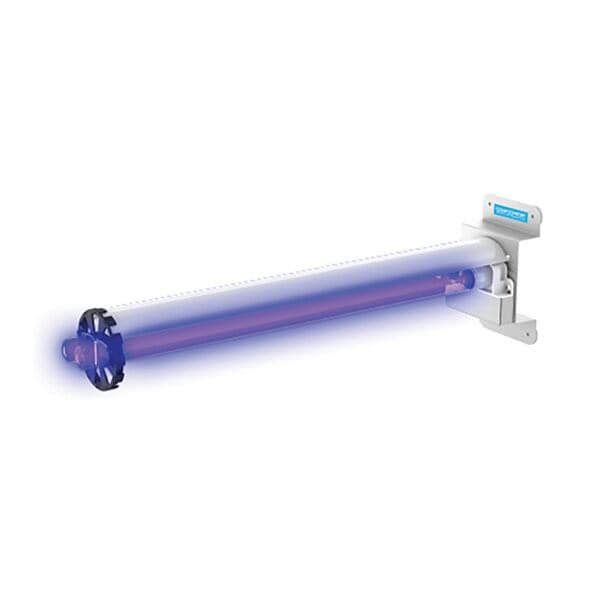 Ultraviolet (UV) lamps neutralize pollutants in passing air, and studies have shown that they can produce beneficial health effects. They are installed inside your HVAC system where they disinfect the cooling coils and airstream. Single-room UV lamps that plug into the wall are also available.
Ultraviolet (UV) lamps neutralize pollutants in passing air, and studies have shown that they can produce beneficial health effects. They are installed inside your HVAC system where they disinfect the cooling coils and airstream. Single-room UV lamps that plug into the wall are also available.
UV can kill virtually any biological contaminant if the exposure time is long enough. However, it is ineffective against physical and chemical contaminants. Typically, UV is used together with a HEPA filter or some other air purification system for maximum coverage.
Humidity Control
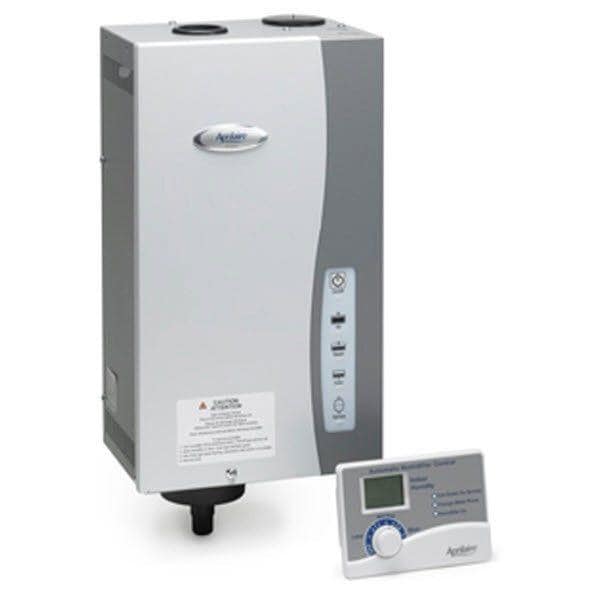 The last way to clean the air in your home is by controlling humidity levels. High humidity creates the perfect environment for mold and bacterial growth. Low humidity decreases your body’s natural defenses against infection and makes it easier for bacteria and viruses to travel through the air. As a result, maintaining proper humidity has several health benefits.
The last way to clean the air in your home is by controlling humidity levels. High humidity creates the perfect environment for mold and bacterial growth. Low humidity decreases your body’s natural defenses against infection and makes it easier for bacteria and viruses to travel through the air. As a result, maintaining proper humidity has several health benefits.
The ideal humidity level for indoor spaces is 40-60%. Anything lower than that is too dry, and anything higher is too wet. Humidifiers add moisture to the air and can be installed in your HVAC system to humidify your entire home. There are also single-room models. Dehumidifiers remove moisture from the air and also come in whole-home and single-room models.
Remember ERVs? In addition to exchanging the air in your home, they can exchange moisture. For example, in humid locations, the outgoing dryer air absorbs moisture from the incoming wetter air. That way, the incoming air is less humid when it enters your home.
Fight Indoor Pollution
Think about it. You spend 90% of your time indoors. It’s important that you keep the air as clean as possible for both you and your family. Using the right ventilation, air purification, and humidity control strategies can be effective for protecting you from indoor air pollutants like viruses, bacteria, and pollen so you can breathe easier.
Confused about how to begin improving indoor air quality in your home? We're here to help. Call 866-554-4328 to speak with one of our indoor air quality experts.

